Music in the cube. Philips Microsystem Overview
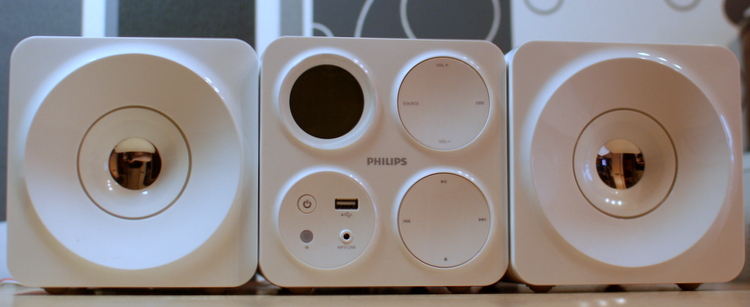
Something for a long time I did not publish reviews and did not hold competitions with valuable prizes. It is time to fix it. So, today I present to your court a post on the Philips MCM1055 microsystem. What is a microsystem? In fact, this is a smaller music center from the 90s, with the ability to listen to music from flash drives and disks. Yes, and compact, in addition, there is no need to allocate a lot of space for it. Read all the details under the cut.
 Appearance
Appearance
So, what is meant by the name of the microsystem and why is it called that way. If you recall the large audio centers that took up a lot of space, then you will realize that they were not very convenient. Yes, they had powerful speakers, a control unit with the ability to listen to music from cassettes, and subsequently from mp3 discs. But our world is striving for minimalism and today to see such a music center in someone's apartment - this is the same atavism as CRT televisions. Yes, they are still there, but they are already living their lives.
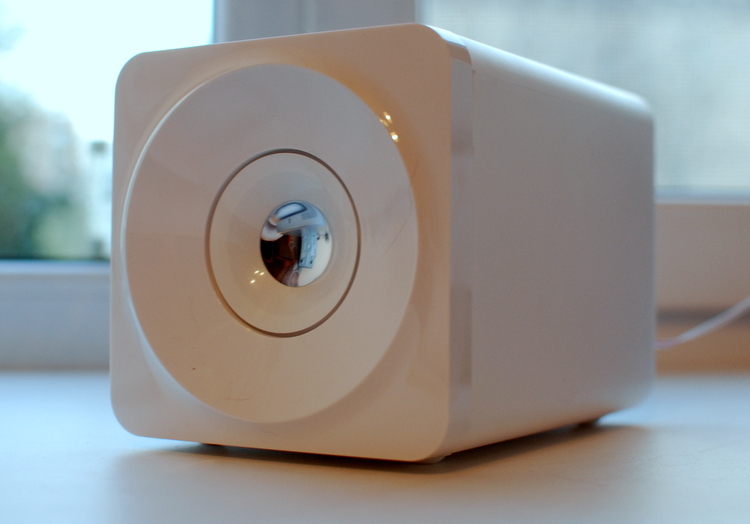
Specifications
- Main unit: single block system
- Optical Drive: CD
- Speaker Design: White
- The design of the main unit: white
- Speaker Kit: 2.0
- Total Power Output (RMS): 24 W
- Front speakers power: 2x12 W
- The diameter of the speakers of the front speakers: 1x76 mm
- Way of loading / mechanics: vertical on 1 disk
- Supported media: CD, CD-R, CD-RW
- Radio: FM
- The number of radio stations in memory: 20
- Inputs: stereo audio
- Outputs: Headphones
- Interfaces: USB Type A
- Speaker system: 140x143x198 mm
- Main unit: 140x143x210 mm
- Supported formats: WMA, MP3
Old devices are being replaced by new ones. So with the muses. centers - they were replaced by small players, which were called microsystems. If you look at its size, it becomes clear that such a system will fit into any design and will take up very little space.
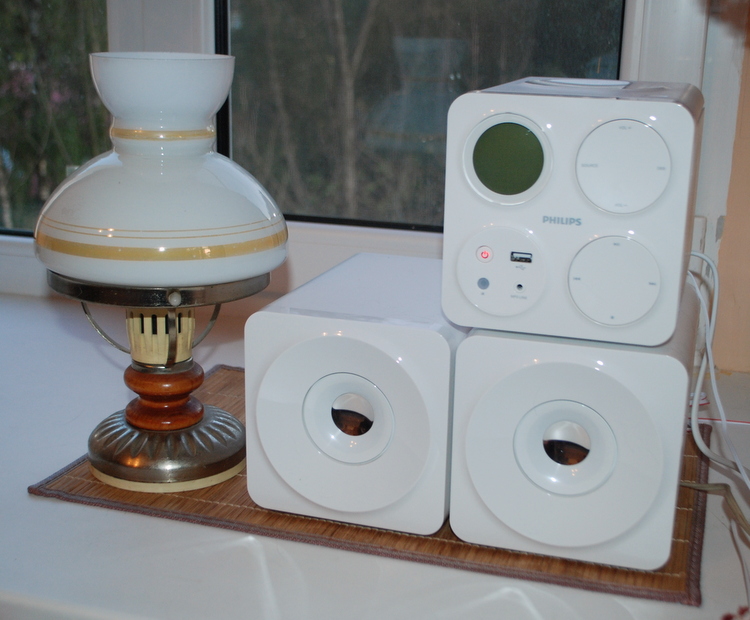
So, for example, this system stands on the windowsill, occupying only its sixth part. Agree, compact, at least for her you can definitely find a place at home.

The microsystem comes in two classic colors: white and black.
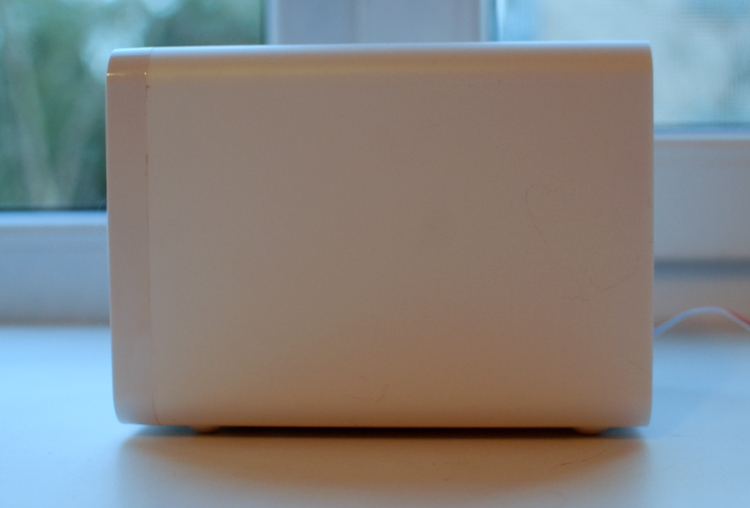
The microsystem consists of three elements of the same size. This, respectively, is the main unit in which all the electronics and two speakers are located. In general, everything is very simple. By the way, I apologize for being a little misleading. Elements are made not in the form of a cube, but in the form of a parallelepiped.
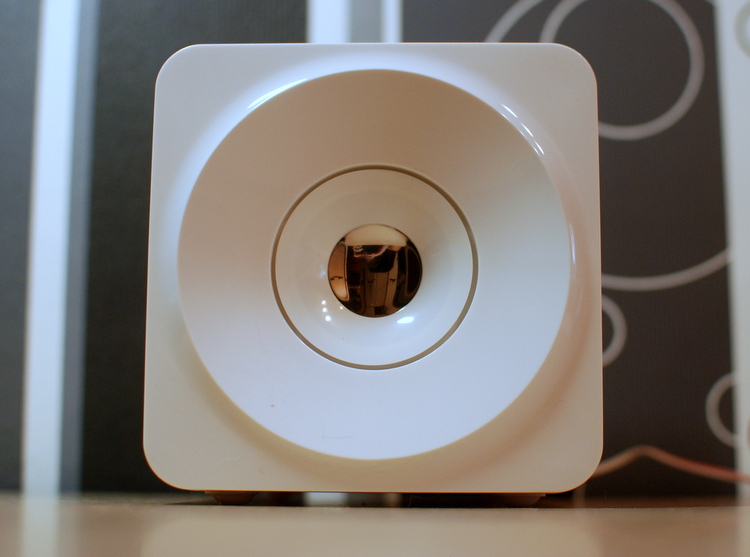
The columns are made the same, without any difference. They are made of glossy white plastic (which is difficult to photograph), a pleasant touch. Alas, the prints remain on the cases, so sometimes you have to wipe your “music box” in order to keep it in its original form.
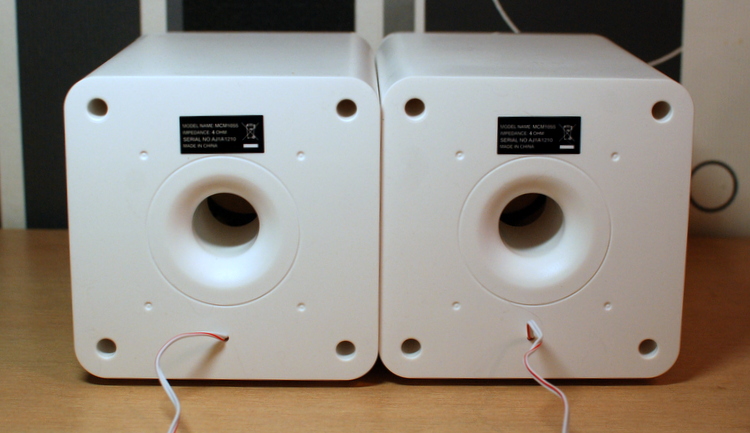
The back of the speakers is also simple. A hole for resonance, 4 holes from the screws that hold the speaker in front, and a wire with which they can be connected to the main unit.
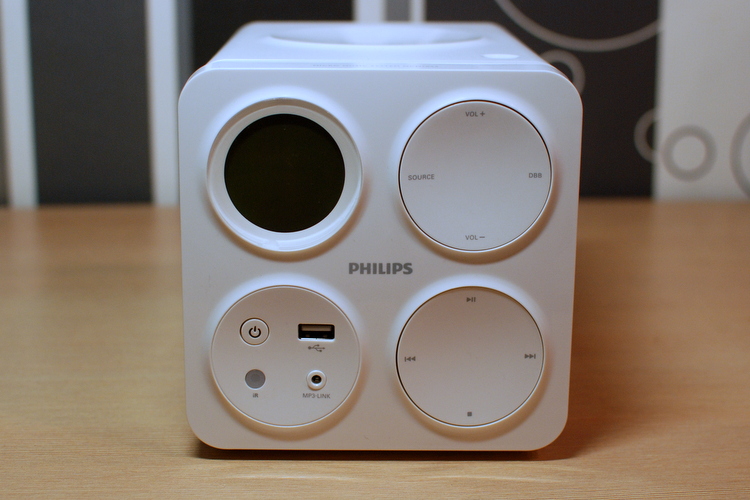
The main unit of the microsystem looks the same as the speakers, but with the only difference being that the front panel is not a speaker, but control units. So, the control panel consists of 4 equal circles. In the upper left is a screen with bright blue backlighting, which shows information about what is currently playing. On the right is a circle with buttons for adjusting the volume and changing playback modes. Directly below it are the Forward, Back, Play / Pause, Stop buttons.
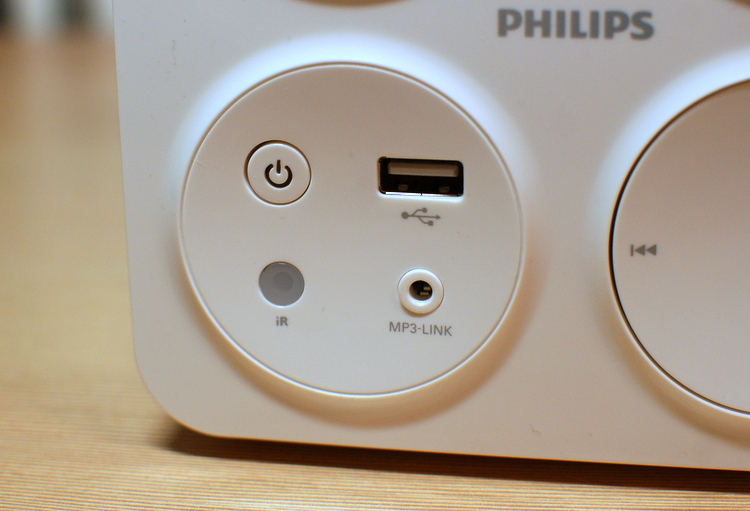
Well, at the bottom left there is a round, which houses the power button, a USB flash drive connector, an infrared port and a 3.5mm port for connecting an MP3 player via cable (not included).
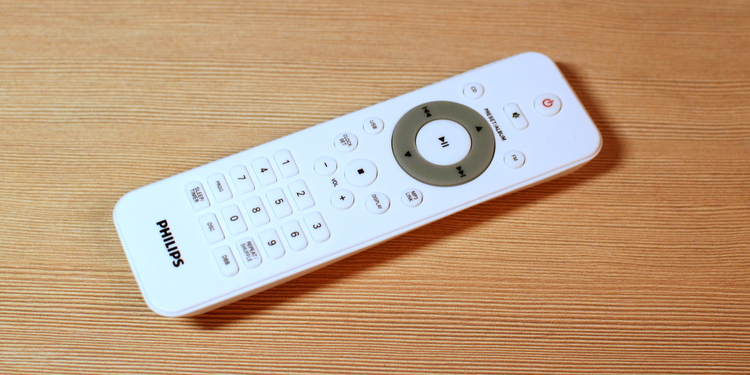
Since there is an infrared port, then there is a remote control. On it, in principle, all those functions that are displayed on the front panel of the main system unit are duplicated. But you must admit, it’s much nicer to control the music without getting up off the couch.
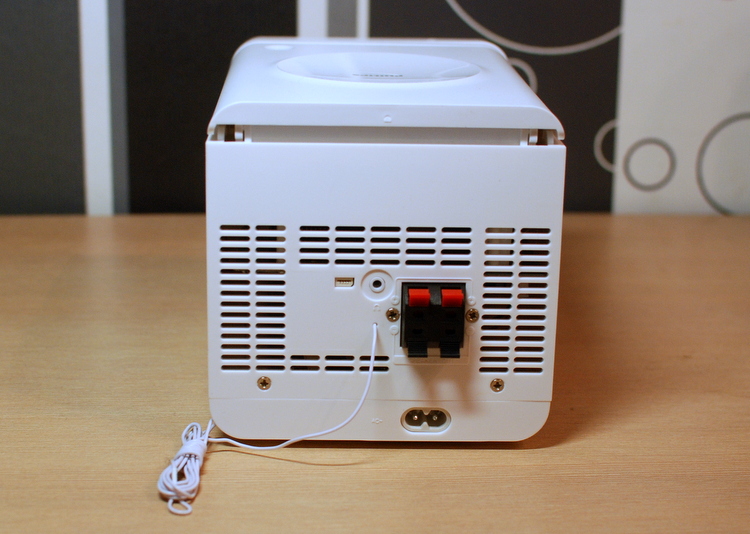
At the back, of course, there are ports for connecting wires from speakers, a place for connecting a power cable, as well as a 3.5 mm port for connecting headphones. Strange, by the way, a place to connect headphones, but what can I do. And from here comes the “tail” of the FM radio antenna.


Above is a CD receiver. So, if you decide to put this system in a column ( and it’s possible, yes), then the top block must be the main one, otherwise you risk not opening the drive cover. The lid opens by pressing the right corner, in general, there will be no problems with this. It is a pity, of course, that there is room for only one disc, but music centers with three slots have long sunk into oblivion.
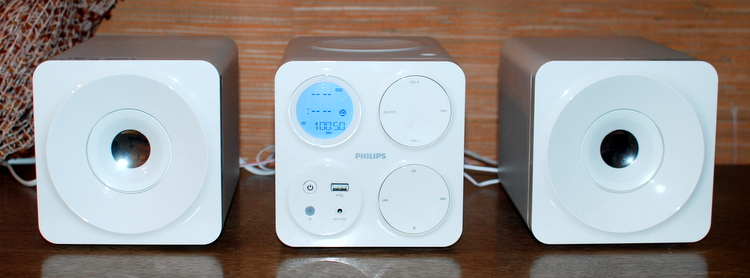
In general, I liked the look of the system. Yes, the glossy surface and bright white color confuse a little, but these are trifles. Such a microsystem will fit into the design of any interior, because white is a classic. Conveniently, you can put the blocks as you like: at least vertically, at least horizontally, in general, fantasy is unlimited. And of course, the main plus is compactness. At home, for example, computer speakers take up twice as much space as the entire microsystem. But the playback quality, of course, is different.
 Opportunities
Opportunities
Let’s now consider what features Philips has pushed into this microsystem. Naturally, you should not expect a warm tube sound from her, he is not here. But she can create a pleasant background or let her relax to the sound of Mozart. No wheezing or cod was noticed. Yes, there are practically no basses either, but they are not really needed. It is unlikely that you will listen to AC \ DC on such a glamorous thing. A little later, however, it turned out that this system has a special feature that increases the amount of bass.
Dynamic bass boost mode emphasizes the bass component of music at any volume level with the touch of a button. The frequencies at the bottom of the bass range are usually lost at a low volume level. To avoid this, you can turn on the dynamic bass boost mode, then the sound will remain full even at low volume. Indeed, after turning on this mode, you can listen to music with bass, which is very cool. But of course, it does not reach powerful systems with subwoofers.
There is an equalizer in the microsystem. It is a set of pre-configured modes: Jazz, Rock, Pop or Classic to optimize sound for specific genres of music. Each mode uses graphical audio equalization technology to automatically adjust the sound balance and emphasize the audio frequencies most important in the selected genre of music.
You can directly listen to music from an MP3 player. You just need to have a wire and a player, then connect the player with a cable to the MP3 Link connector. This is very convenient, because it’s not necessary to record a USB flash drive with music, but you can just listen to songs from your player.
The rest of the feature set is standard. In general, the sound of the speakers satisfied me. Yes, the bass does not reach a bit, the sound is not as “warm and tube” as on large wooden speakers, but for its price the device plays very tolerably.
 Pros and cons
Pros and cons
I liked the microsystem itself. As with any product, there are pros and cons, moreover, very subjective ones. By the way, this device costs around 2,900 rubles. And for such a cost, he can forgive a lot, even the gloss, which I really do not like.
 Stylish appearance
Stylish appearance  Wide range of possibilities
Wide range of possibilities  Compactness
Compactness  Good sound quality
Good sound quality  No wireless connection
No wireless connection  Glossy case
Glossy case I would recommend such a microsystem to anyone who likes to listen to music at home, but who does not have much money and space in the apartment to install a cool and powerful audio system. And in terms of price / quality ratio, this system is ideal. So, if you are ready to put up with some disadvantages, then it is for you.
PS Philips showed at IFA in Berlinmany interesting new products . I was pleased with the vintage radio. We must wait for the release in Russia.
 Prize contest
Prize contest

If you liked this microsystem, now you have the opportunity to win one to your home. So what needs to be done for this? The rules are extremely simple. You must tell why you need this microsystem. The form of supply, volume, in general, everything else, choose yourself. If you want - you can write an essay or a poem, if you want - draw a comic book or take a photo in your room, where the microsystem fits perfectly. You can even write a song. I limit only to theme and time. Dates: from September 4 to September 11 inclusive.
To make everything as transparent as possible, write all the entries in the comments (good, you can have text, pictures, and video there). Only at the end, sign "For the competition." Thus, in a week (September 12), I and a Philips employee will collect all the comments and choose the most interesting one. Its owner will receive a prize. Good luck
